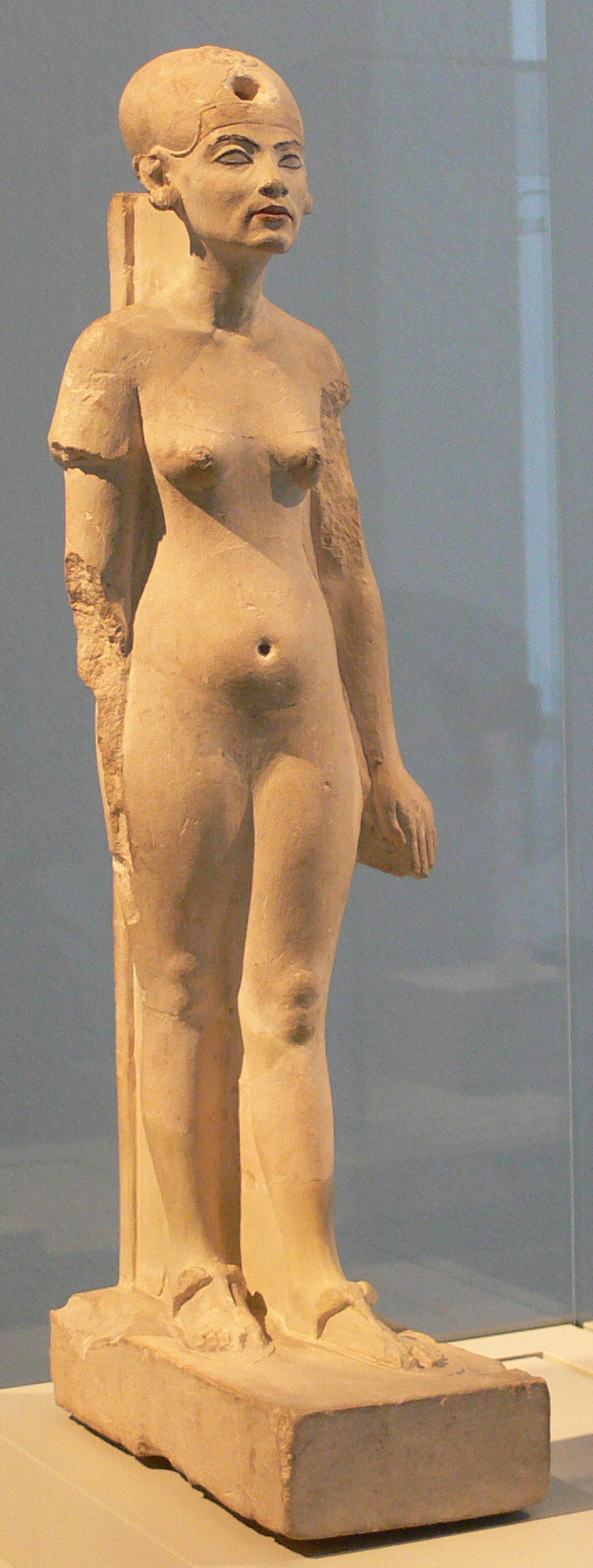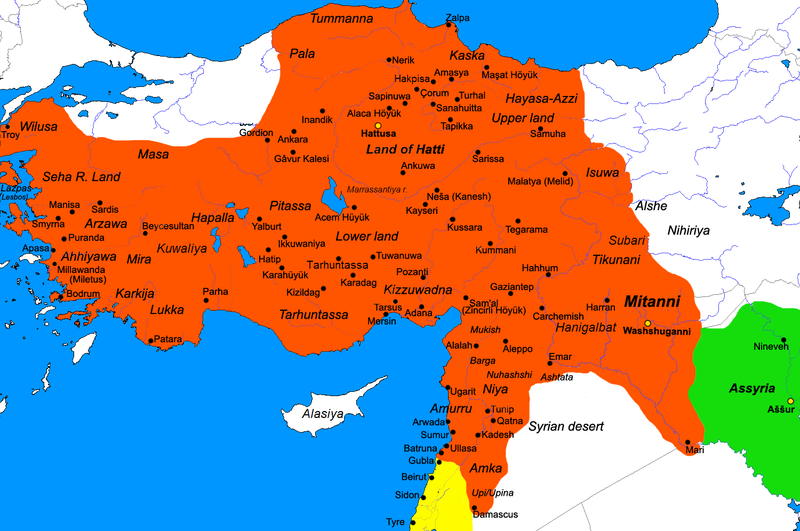|
Dakhamunzu
Dakhamunzu (properly ''Daḫamunzu'') is the name of an Egyptian queen known from the Hittite annals '' The Deeds of Suppiluliuma'', which were composed by Suppiluliuma I's son Mursili II. The identity of this queen has not yet been established with any degree of certainty and Dakhamunzu has variously been identified as either Nefertiti, Meritaten or Ankhesenamen. The identification of this queen is of importance both for Egyptian chronology and for the reconstruction of events during the late Eighteenth Dynasty. However, in recent years it has been noted that Dahamunzu may be the Hittite phonetic rendition of the Egyptian ''ta hemet nesu'', 'the king's wife', and thus is simply the equivalent of addressing her as the equivalent of 'queen'. If so, then Dahamanzu is not a proper name at all and thus not a mysterious synonym for any of the queens discussed here, and is instead only a title. See below on this page. The episode in ''The Deeds of Suppiluliuma'' that features Dakha ... [...More Info...] [...Related Items...] OR: [Wikipedia] [Google] [Baidu] |
Nefertiti
Nefertiti () () was a queen of the Eighteenth Dynasty of Egypt, 18th Dynasty of Ancient Egypt, the Great Royal Wife, great royal wife of Pharaoh Akhenaten. Nefertiti and her husband were known for their radical overhaul of state religious policy, in which they promoted the earliest known form of monotheism, Atenism, centered on Aten, the sun disc and its direct connection to the royal household. With her husband, she reigned at what was arguably the wealthiest period of ancient Egyptian history. After her husband's death, some scholars believe that Nefertiti ruled briefly as the female pharaoh known by the throne name, Neferneferuaten and before the ascension of Tutankhamun, although this identification is Neferneferuaten#Nefertiti, a matter of ongoing debate. If Nefertiti did rule as pharaoh, her reign was marked by the fall of Amarna and relocation of the capital back to the traditional city of Thebes, Egypt, Thebes. In the 20th century, Nefertiti was made famous by the disco ... [...More Info...] [...Related Items...] OR: [Wikipedia] [Google] [Baidu] |
Ankhesenamun
Ankhesenamun (, "Her Life Is of Amun"; c. 1348 or c. 1342 – after 1322 BC) was an ancient Egyptian queen who lived during the Eighteenth Dynasty of Egypt, 18th Dynasty of Egypt. Born Ankhesenpaaten (, "she lives for the Aten"), she was the third of six known daughters of the Egyptian Pharaoh Akhenaten and his Great Royal Wife Nefertiti. She became the Great Royal Wife of Tutankhamun. The change in her name reflects the changes in ancient Egyptian religion during her lifetime after her father's death. Her youth is well documented in the ancient reliefs and paintings of the reign of her parents. Ankhesenamun was well documented as being the Great Royal Wife of Pharaoh Tutankhamun. Initially, she may have been married to her father and it is possible that, upon the death of Tutankhamun, she was married briefly to Tutankhamun's successor, Ay (pharaoh), Ay, who is believed by some to be her maternal grandfather. DNA test results on mummies discovered in KV21 were released in F ... [...More Info...] [...Related Items...] OR: [Wikipedia] [Google] [Baidu] |
Ankhesenamen
Ankhesenamun (, "Her Life Is of Amun"; c. 1348 or c. 1342 – after 1322 BC) was an ancient Egyptian queen who lived during the 18th Dynasty of Egypt. Born Ankhesenpaaten (, "she lives for the Aten"), she was the third of six known daughters of the Egyptian Pharaoh Akhenaten and his Great Royal Wife Nefertiti. She became the Great Royal Wife of Tutankhamun. The change in her name reflects the changes in ancient Egyptian religion during her lifetime after her father's death. Her youth is well documented in the ancient reliefs and paintings of the reign of her parents. Ankhesenamun was well documented as being the Great Royal Wife of Pharaoh Tutankhamun. Initially, she may have been married to her father and it is possible that, upon the death of Tutankhamun, she was married briefly to Tutankhamun's successor, Ay, who is believed by some to be her maternal grandfather. DNA test results on mummies discovered in KV21 were released in February 2010, which has given rise to spec ... [...More Info...] [...Related Items...] OR: [Wikipedia] [Google] [Baidu] |
Neferneferuaten
Ankhkheperure-Merit-Neferkheperure/Waenre/Aten Neferneferuaten (), or "Neferneferuaten", is the name of a queen regnant ('female pharaoh, king') of ancient Egypt who reigned in her own right near the end of the Amarna Period during the Eighteenth dynasty of Egypt, Eighteenth Dynasty. Her name features feminine Grammatical gender, gender traces; and one of her epithets was ''Akhet-en-hyes'' ("Effective for her husband"). This epithet also features in one version of her Nomen (ancient Egypt), nomen (birth name) cartouche. (See Ancient Egyptian royal titulary.) She is distinguished from the king Smenkhkare, with whom she shared the prenomen (throne name) ''Ankhkheperure'', by the presence of epithets in both cartouches. It has been suggested that she was in fact Smenkhkare's wife Meritaten or his predecessor Akhenaten's widow Nefertiti. The Golden Nut Pectoral (Carter no. 261p1) The golden Nut Pectoral (Ancient Egypt), pectoral (Carter no. 261p1) was also reused for the funeral o ... [...More Info...] [...Related Items...] OR: [Wikipedia] [Google] [Baidu] |
Zannanza
Zannanza (died c. 1324 BC) was a Hittite prince, son of Suppiluliuma I, king of the Hittites. He is best known for almost becoming the pharaoh of Egypt, but his disappearance under mysterious circumstances caused a diplomatic incident between the Hittites and Egyptian Empire, resulting in a war that ultimately resulted in the death of Suppliluliuma by an unknown plague and a long-lived rivalry between Egypt and the Hittites. His disappearance is the earliest recorded case of a missing person. Biography Zannanza was born to king Suppilulliuma I and possibly his first wife Henti. He was likely born in the capital of Hattusa after the Hittite prince Arnuwanda II, who was the heir to their father. He also had at least three other brothers including Telipinu, Piyassili, and Muršili II. He additionally had an unknown number of sisters. After an offer of marriage from an Egyptian queen identified to be Ankhesenamun, he was sent by his father to accept the proposal but went m ... [...More Info...] [...Related Items...] OR: [Wikipedia] [Google] [Baidu] |
Tutankhamun
Tutankhamun or Tutankhamen, (; ), was an Egyptian pharaoh who ruled during the late Eighteenth Dynasty of Egypt, Eighteenth Dynasty of ancient Egypt. Born Tutankhaten, he instituted the restoration of the traditional polytheistic form of ancient Egyptian religion, undoing a previous shift to the religion known as Atenism. Tutankhamun's reign is considered one of the greatest restoration periods in ancient Egyptian history. His endowments and restorations of cults were recorded on what is today known as the Restoration Stela. The cult of the god Amun at Thebes, Egypt, Thebes was restored to prominence, and the royal couple changed their names to "Tutankhamun" and "Ankhesenamun", replacing the -aten suffix. He also moved the royal court from Akhenaten's capital, Amarna, back to Memphis, Egypt, Memphis almost immediately on his accession to the kingship. He reestablished diplomatic relations with the Mitanni and carried out military campaigns in Nubia and the Near East. Tutankh ... [...More Info...] [...Related Items...] OR: [Wikipedia] [Google] [Baidu] |
Egyptian Language
The Egyptian language, or Ancient Egyptian (; ), is an extinct branch of the Afro-Asiatic languages that was spoken in ancient Egypt. It is known today from a large corpus of surviving texts, which were made accessible to the modern world following the decipherment of the ancient Egyptian scripts in the early 19th century. Egyptian is one of the earliest known written languages, first recorded in the hieroglyphic script in the late 4th millennium BC. It is also the longest-attested human language, with a written record spanning over 4,000 years. Its classical form, known as " Middle Egyptian," served as the vernacular of the Middle Kingdom of Egypt and remained the literary language of Egypt until the Roman period. By the time of classical antiquity, the spoken language had evolved into Demotic, and by the Roman era, diversified into various Coptic dialects. These were eventually supplanted by Arabic after the Muslim conquest of Egypt, although Bohairic Coptic ... [...More Info...] [...Related Items...] OR: [Wikipedia] [Google] [Baidu] |
Ancient Egypt
Ancient Egypt () was a cradle of civilization concentrated along the lower reaches of the Nile River in Northeast Africa. It emerged from prehistoric Egypt around 3150BC (according to conventional Egyptian chronology), when Upper and Lower Egypt were amalgamated by Menes, who is believed by the majority of List of Egyptologists, Egyptologists to have been the same person as Narmer. The history of ancient Egypt unfolded as a series of stable kingdoms interspersed by the "Periodization of ancient Egypt, Intermediate Periods" of relative instability. These stable kingdoms existed in one of three periods: the Old Kingdom of Egypt, Old Kingdom of the Early Bronze Age; the Middle Kingdom of Egypt, Middle Kingdom of the Middle Bronze Age; or the New Kingdom of Egypt, New Kingdom of the Late Bronze Age. The pinnacle of ancient Egyptian power was achieved during the New Kingdom, which extended its rule to much of Nubia and a considerable portion of the Levant. After this period, Egypt ... [...More Info...] [...Related Items...] OR: [Wikipedia] [Google] [Baidu] |
Akhenaten
Akhenaten (pronounced ), also spelled Akhenaton or Echnaton ( ''ʾŪḫə-nə-yātəy'', , meaning 'Effective for the Aten'), was an ancient Egyptian pharaoh reigning or 1351–1334 BC, the tenth ruler of the Eighteenth Dynasty of Egypt, Eighteenth Dynasty. Before the fifth year of his reign, he was known as Amenhotep IV (, meaning "Amun is satisfied", Hellenized as ''Amenophis IV''). As a pharaoh, Akhenaten is noted for abandoning traditional ancient Egyptian religion of polytheism and introducing Atenism, or worship centered around Aten. The views of Egyptologists differ as to whether the religious policy was absolutely monotheism, monotheistic, or whether it was monolatristic, religious syncretism, syncretistic, or henotheistic. This culture shift away from traditional religion was reversed after his death. Akhenaten's monuments were dismantled and hidden, his statues were destroyed, and his name Damnatio memoriae, excluded from regnal list, lists of rulers compiled by lat ... [...More Info...] [...Related Items...] OR: [Wikipedia] [Google] [Baidu] |






